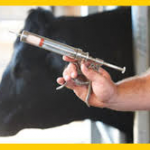Why Is Worming Livestock So Important?
go.ncsu.edu/readext?349980
en Español / em Português
El inglés es el idioma de control de esta página. En la medida en que haya algún conflicto entre la traducción al inglés y la traducción, el inglés prevalece.
Al hacer clic en el enlace de traducción se activa un servicio de traducción gratuito para convertir la página al español. Al igual que con cualquier traducción por Internet, la conversión no es sensible al contexto y puede que no traduzca el texto en su significado original. NC State Extension no garantiza la exactitud del texto traducido. Por favor, tenga en cuenta que algunas aplicaciones y/o servicios pueden no funcionar como se espera cuando se traducen.
Português
Inglês é o idioma de controle desta página. Na medida que haja algum conflito entre o texto original em Inglês e a tradução, o Inglês prevalece.
Ao clicar no link de tradução, um serviço gratuito de tradução será ativado para converter a página para o Português. Como em qualquer tradução pela internet, a conversão não é sensivel ao contexto e pode não ocorrer a tradução para o significado orginal. O serviço de Extensão da Carolina do Norte (NC State Extension) não garante a exatidão do texto traduzido. Por favor, observe que algumas funções ou serviços podem não funcionar como esperado após a tradução.
English
English is the controlling language of this page. To the extent there is any conflict between the English text and the translation, English controls.
Clicking on the translation link activates a free translation service to convert the page to Spanish. As with any Internet translation, the conversion is not context-sensitive and may not translate the text to its original meaning. NC State Extension does not guarantee the accuracy of the translated text. Please note that some applications and/or services may not function as expected when translated.
Collapse ▲ Although specific estimates are not available, economic losses from worm parasite infections of cattle can be significant. But the extent of internal parasite problems is usually related to management practices that increase exposure, whereas ongoing preventive management practices will minimize losses caused by parasite infections.
Although specific estimates are not available, economic losses from worm parasite infections of cattle can be significant. But the extent of internal parasite problems is usually related to management practices that increase exposure, whereas ongoing preventive management practices will minimize losses caused by parasite infections.
Calves under one year of age are more susceptible than older cattle. Older cattle frequently have been exposed to the parasites and developed a degree of immunity.
Adult worms in the gut of cattle produce eggs that are passed in the feces. The eggs hatch, producing immature larvae that develop and move up onto the pasture grasses. Infective larval forms of the worms may be present in large numbers on the growing forage. Some of the eggs can survive the winter and hatch out with warm weather. Temperatures between 60° and 80°F. and at least 2 inches of rainfall per month provide excellent propagation conditions. Feed bunks or waterers contaminated with feces can be a source of exposure to the larvae.
The need to worm calves during the summer depends strictly on the degree of contamination of pastures or lots. Use of the same pastures year after year or high densities of grazing cattle can result in heavily contaminated forage. The number of times calves should be wormed during the spring and summer depends on the level of exposure and reinfection.
Worming of cattle at the time they enter the feedlot is cost-effective only if the load of parasites they are carrying is great enough to reduce the rate of gain. The decision to worm cattle can be based on finding large numbers of worm eggs by microscopic examination of feces. Alternatively, cattle from the southeastern United States can generally be expected to have a heavier load of parasites than western cattle. The parasite load of cattle from the Midwest will be variable.
Internal parasites have the greatest impact on rate of gain when cattle are on low energy levels which are typical of receiving or backgrounding rations. Therefore, worming feedlot cattle when they are processed into the feedlot will give the best returns.
The cow herd is the major source of initial exposure of the calves. One of the most important worms in cattle lives in the abomasum, the true stomach. The stomach worms are active during the grazing season busily laying eggs. At the end of the grazing season they bury themselves in the stomach wall and are dormant until spring when they emerge and start egg laying. Timely deworming prior to the grazing season will greatly reduce the subsequent contamination of pastures during the grazing season.
The pregnant cows can be dewormed in the fall. The cows can be expected to winter better, have a higher conception rate the next breeding season, and wean heavier calves.




